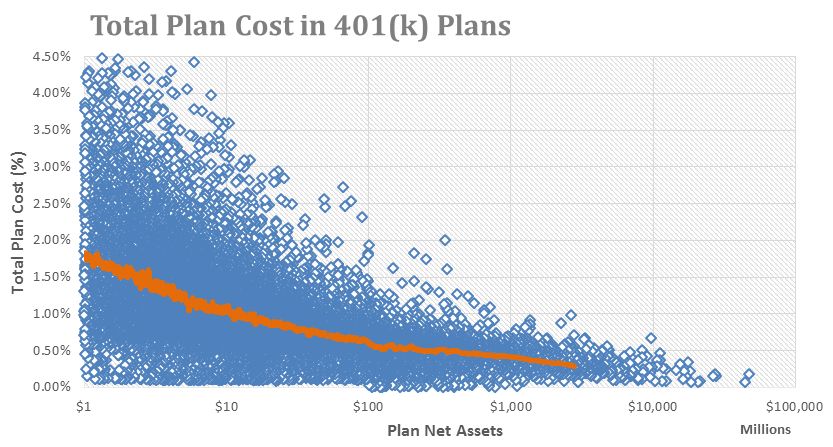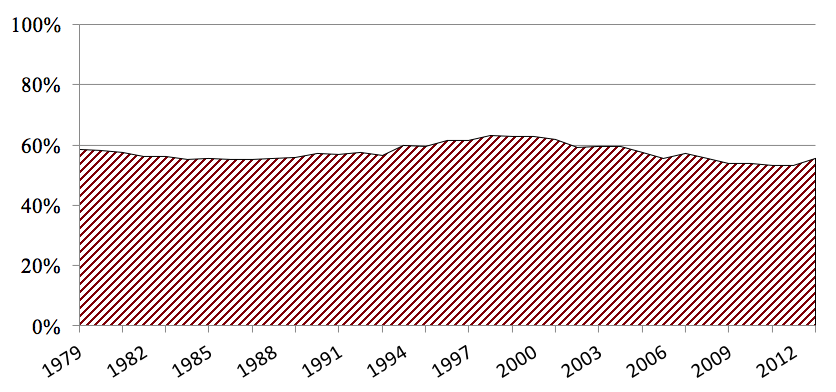Testimony: Colorado Secure Savings Plan Offers Coloradans Retirement Security
Rich Jones, director of policy and research at the Bell Policy center, testified to the House Business Affairs and Labor Committee in support of the Colorado Secure Savings Plan.
The Bell Policy Center strongly supports HB18-1298 to create the Colorado Secure Savings Plan, a public-private partnership to offer workplace retirement savings plans for private sector workers without access to one. In our 2016 study, we found almost 900,000 Colorado private sector workers in their prime working years are not participating in any type of retirement savings plans at work. More than 80 percent work for employers who do not offer a retirement savings plan, making lack of access the top reason Coloradans have a hard time saving for retirement. Workers in low-wage jobs, members of minority groups, those working in small businesses, and those working in the agriculture, construction, and accommodations, and food services industries are least likely to have a retirement savings plan at work.
The Colorado Secure Savings Plan will provide a triple win for Coloradans. First, it will help 750,000 workers gain access to the best way to save for retirement, putting away a little money from each paycheck in workplace savings plan. As a result, they will be better prepared financially for retirement.
Second, it will help small businesses provide their workers with low-cost, professionally managed retirement savings plans, something they often can’t afford to do now. This will help them better compete with larger firms by allowing them to attract and retain workers in a tight labor market.
Third, the Colorado Secure Savings Plan will help state and local governments by increasing the savings held by Coloradans entering retirement. This will reduce the number of seniors needing financial assistance, and help with housing and Medicaid in retirement. Economists at Brigham Young University determined if the one-third of Utah’s retirees with the lowest savings had increased their savings by just 10 percent over their working years — or about $14,000 — it would have saved $194 million in federal, state, and local government spending over 15 years.
Anywhere from one-half to two-thirds of working-age families are at risk of not being able to maintain their pre-retirement standard of living, with low-income families being most at risk. A General Accountability Office analysis says the lack of a workplace retirement savings plan is the major barrier limiting workers, particularly those in low-wage jobs, from saving for retirement. But if offered a plan, most workers participated with almost two-thirds (63 percent) of workers in the lowest income level and three-quarters (74 percent) of those in the second-lowest income level participating.
States are acting to expand access to workplace retirement savings plans. Six states — California, Connecticut, Illinois, Maryland, Oregon, and Vermont — have enacted legislation to provide workplace retirement plans for their private sector workers who do not have access to them.
Oregon began enrolling employers and workers in a pilot in July 2017 and has since rolled their plan — OregonSaves — out to large employers in January 2018. The program has been so popular that hundreds of small businesses asked to join well ahead of their scheduled phase-in date because they wanted to offer the option to their employees. As of March 30, 2018, 487 employers have registered to submit employee deductions to OregonSaves, and 77 percent of the 37,676 eligible employees have enrolled in the program, saving about $100 per month. The program is on track to be financially sustainable with total fees of less than 1 percent.
Over the long run, the state facilitated plans are projected to have enough participants and economies of scale that they can be operated for fees of about 0.5 percent. This is a substantial savings over the median total fees of 1.13 percent charged to small businesses for 401(k) plans with between $1 million and $10 million in assets. However, total fees on many of these plans range from 2.0 percent to 3.5 percent (see Figure 1). Paying 0.5 percent to 1.0 percent more in fees, when compounded over 20 years to 30 years, significantly reduces the amount of money workers will have in retirement.
Figure 1: Total Plan Cost in 401(k) Plans, in Millions
BrightScope, 2014

There have been many attempts over the years to make it easier for businesses to offer retirement savings plans. As Figure 2 shows, these efforts have failed to move the needle. As researchers at the Center for Retirement Research at Boston College observed, these efforts have not worked to expand access in the past and are unlikely to work in the future.
Figure 2: Percentage of Private Sector Workers (aged 25-64) Offered
Employer-Sponsored Retirement Plan Fairly Constant Between 1979-2013
Center for Retirement Research, Boston College, 2016

Coloradans take great pride in our willingness to innovate and craft solutions that are uniquely designed to meet the challenges we face. Creating the Colorado Secure Savings Plan is an opportunity to creatively address the challenge of helping workers save more of their own money and providing retirement security for more Coloradans. As our economy evolves and more people become “gig” workers, we need to rethink how we provide them with the workplace benefits that accompany traditional employment.
We thank Representative Pettersen and Representative Bridges for bringing this bill to you today and thank the committee for the opportunity to share our thoughts with you.
I am happy to answer any questions you might have.
